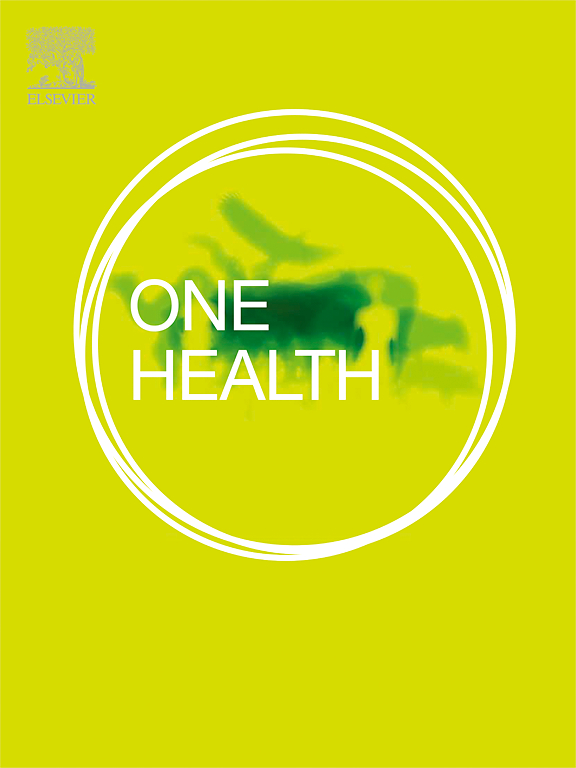Seroprevalence of Toxoplasma gondii in goats and sheep in Qatar
IF 4.5
2区 医学
Q1 INFECTIOUS DISEASES
引用次数: 0
Abstract
Background
Toxoplasmosis, caused by Toxoplasma gondii, is a zoonotic infection with significant implications for animal and human health. Congenital transmission leads to reproductive issues affecting livestock productivity. This study aims to assess the prevalence of Toxoplasma antibodies in goats and sheep using the Modified Agglutination Test (MAT).
Methods
Blood samples were collected from 799 small ruminants (537 sheep and 262 goats) across seven municipalities in Qatar between November 2019 and November 2021. The samples were analyzed using MAT to detect T. gondii IgG antibodies. Seroprevalence was determined, and statistical analysis was performed to assess risk factors such as age, gender, location, and season.
Results
Of the 799 samples, statistically, 23.0 % tested positive for T. gondii antibodies, with 18.4 % of sheep and 32.4 % of goats recorded seropositive. Age was identified as a significant risk factor for sheep, with older sheep showing higher seroprevalence, while no significant risk factors were found for goats. Other variables, such as sex, location, and season, showed no significant association.
Conclusions
This study, the first targeting small ruminants in the country, reveals notable differences in T. gondii prevalence between sheep and goats in Qatar. Age is a key risk factor in sheep, but further research is needed to explore other factors, especially in goats.
卡塔尔山羊和绵羊刚地弓形虫血清流行率
弓形虫病是由刚地弓形虫引起的一种人畜共患传染病,对动物和人类健康具有重大影响。先天性传播导致影响牲畜生产力的生殖问题。本研究旨在利用改良凝集试验(MAT)评估山羊和绵羊中弓形虫抗体的流行情况。方法2019年11月至2021年11月,从卡塔尔7个城市的799只小反刍动物(537只绵羊和262只山羊)中采集血液样本。采用MAT法检测弓形虫IgG抗体。测定血清阳性率,并进行统计分析,评估年龄、性别、地点和季节等危险因素。结果799份样本中,弓形虫抗体阳性率为23.0%,其中绵羊和山羊分别为18.4%和32.4%。年龄被确定为绵羊的重要危险因素,年龄较大的绵羊显示出更高的血清阳性率,而山羊没有发现显著的危险因素。其他变量,如性别、地点和季节,没有显示出显著的关联。结论本研究首次以卡塔尔的小型反刍动物为研究对象,揭示了卡塔尔绵羊和山羊间弓形虫流行率的显著差异。年龄是绵羊的一个关键风险因素,但需要进一步研究探索其他因素,特别是山羊。
本文章由计算机程序翻译,如有差异,请以英文原文为准。
求助全文
约1分钟内获得全文
求助全文
来源期刊

One Health
Medicine-Infectious Diseases
CiteScore
8.10
自引率
4.00%
发文量
95
审稿时长
18 weeks
期刊介绍:
One Health - a Gold Open Access journal.
The mission of One Health is to provide a platform for rapid communication of high quality scientific knowledge on inter- and intra-species pathogen transmission, bringing together leading experts in virology, bacteriology, parasitology, mycology, vectors and vector-borne diseases, tropical health, veterinary sciences, pathology, immunology, food safety, mathematical modelling, epidemiology, public health research and emergency preparedness. As a Gold Open Access journal, a fee is payable on acceptance of the paper. Please see the Guide for Authors for more information.
Submissions to the following categories are welcome:
Virology,
Bacteriology,
Parasitology,
Mycology,
Vectors and vector-borne diseases,
Co-infections and co-morbidities,
Disease spatial surveillance,
Modelling,
Tropical Health,
Discovery,
Ecosystem Health,
Public Health.
 求助内容:
求助内容: 应助结果提醒方式:
应助结果提醒方式:


